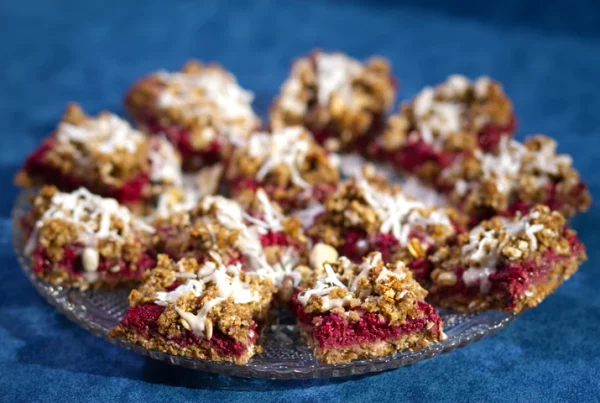Submitted by Kim Campbell, director of culinary education.
Kitchen organization is key to successful meal planning and preparation. Teaching my children how to cook, writing a cookbook, and traveling to cooking demos has completely changed how I shop, prep, and cook. Efficiency is essential to sticking with a healthy whole-food, plant-based lifestyle. Here are some helpful tips for staying on task:

Photo courtesy of Amy Bissinger.
1. Clean out your refrigerator every weekend. Discard food that is outdated and organize your refrigerator space, making room for new produce and food items for the next grocery trip. There’s nothing worse than arriving home with bags of groceries and no place to put things. You always want to be able to see what’s in your refrigerator and pantry. When food is out of sight, it’s also out of mind, which equals wasted food. We’ve all experienced that moldy, unrecognizable leftover dish hidden in the back of the refrigerator.
2. Plan the next week’s meals. Write down titles, cookbook page numbers, and websites. Post this info on chalkboards or whiteboards for visual access. These are wonderful for organizing meals and lists.
3. Choose recipes that are easy to prepare in larger quantities, such as casseroles and slow-cooker meals.
4. Head to the grocery store with a list of ingredients for the meals you are planning. Don’t go unprepared with a hungry stomach—that’s how I end up with strange and often unhealthy items!

Photo courtesy of Pixabay.
5. Wash and pre-cut produce. Many stores offer pre-cut veggies, but you will pay a premium. Not all fresh veggies hold up when pre-cut. Do pre-cut sweet potatoes, winter squashes, carrots, celery, broccoli, cauliflower, Brussels sprouts, cabbage, cucumbers, green beans, leeks, peppers (to keep peppers from getting slimy, wrap in a sheet of paper towel), and zucchini. Do not pre-cut onions, okra, tomatoes, or white potatoes.

Photo courtesy of Pixabay.
6. Buy frozen vegetables. They can drastically reduce prep time (and save money). I recommend having these staple veggies on hand in the freezer: diced onions, diced or sliced peppers, peas, corn, edamame, spinach, sweet potatoes (these are not available at all grocery stores), hash browns, broccoli, and cauliflower.
7. Have plenty of freezer and regular zip-top bags in various sizes, storage containers, labels, and a sharpie (for labeling) on hand.

Photo courtesy of Kim Campbell.
8. Prep as many veggies and spice combinations as possible for your recipes, place in small snack-sized Ziploc bags, and label. Store the small spice bags inside the larger gallon bag with the prepped produce for that specific recipe. Label the outside of the gallon bag according to the recipe, e.g., “White Chili.” When I teach a cooking class, this is how I manage several recipes in 90 minutes or less.

Photo courtesy of Pixabay.
9. When you begin cooking, place every ingredient you need on the countertop. This means only one trip to the refrigerator and pantry. Cooking is a chore partly because people often run back and forth from stove to pantry. If you have small children who are learning to cook, this is a beautiful way to get them started as well.
10. Investing in an electric pressure cooker will make cooking grains and beans a snap. I love my instant-pot! An instant-pot is a rice cooker, slow cooker, pressure cooker, yogurt maker, steamer, and more.
11. Keep a grocery list posted in your kitchen. When you run out of a spice or other pantry item, write it down for the next grocery store trip. It’s not fun to run out of basics.

